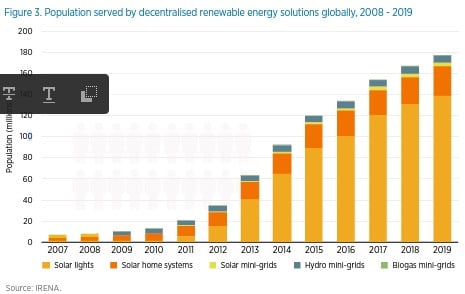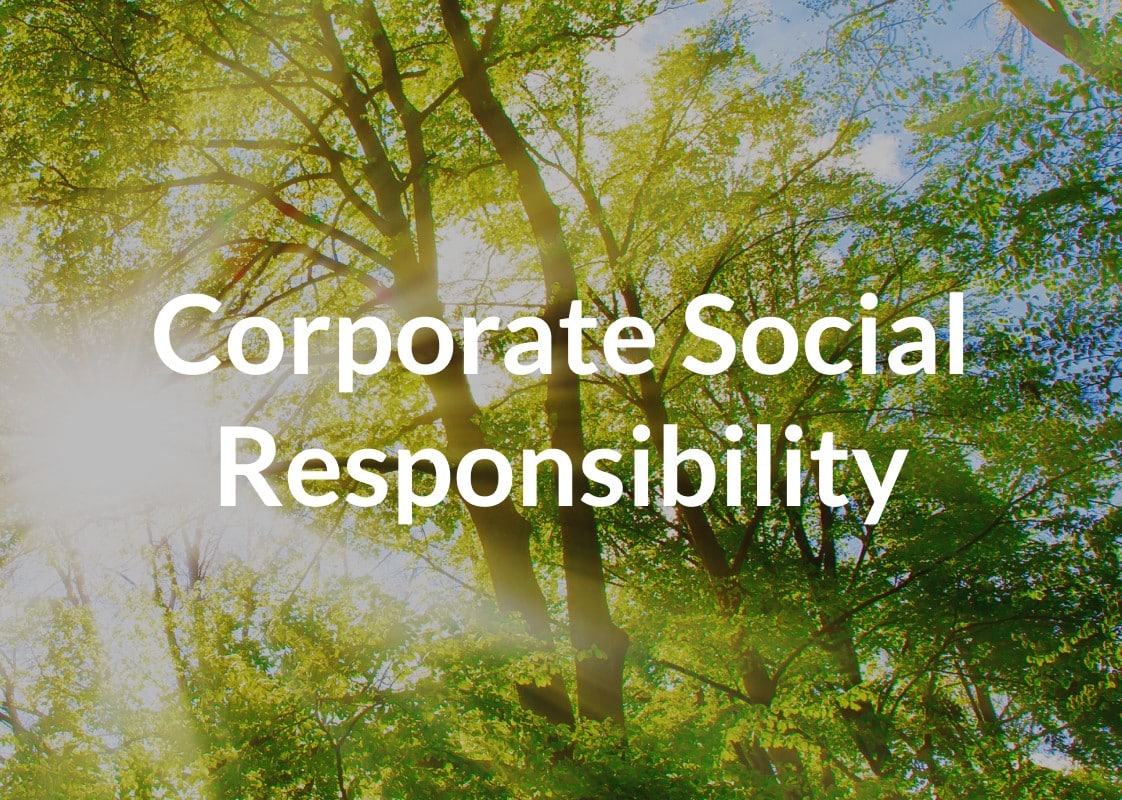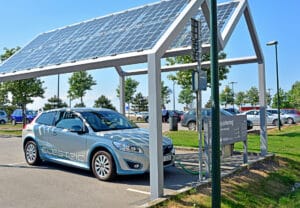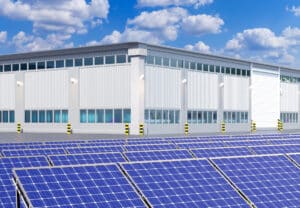
How clean is the energy you use?
It’s a question we rarely ask ourselves, as the world steadily increases its energy needs year by year. Nowadays, renewable energy sources like solar and wind energy are mentioned frequently, but people rarely take the time to understand the impact of the energy they use.
As society and industry both begin to examine their energy use and carbon emissions in-depth, these “clean” power sources are a critical aspect of this transition.
However, the words “clean”, “green”, and “renewable” energy are thrown around pretty flippantly, making it worthwhile to first clarify the distinctions between them.
Clean or green energy? Clearing up the confusion
Clean, green, and renewable energy are often found interchangeably in public discourse, but they are distinctly different from one another. Clean energy can be extracted from sources that do release pollutants but do not produce greenhouse gas (GHG) emissions. Some great examples of this are nuclear power and biogas.
Green energy is derived from natural self-replenishing sources and does not generate GHG or damage the environment. Lastly, renewables come from constantly self-replenishing natural sources, but can still impact the environment from harnessing them.
A great example of this is hydroelectric power. It is a renewable energy source, but cannot be considered “green.” This is due to deforestation often required to harness it, causing significant damage to the surrounding environment, not to mention the construction process and materials.
Now that we’ve cleared up some of the terminologies, let’s dive into the latest trends in clean energy innovation and markets.
Top 8 Trends in Clean Energy
1. The Breakthrough Energy Catalyst
Breakthrough Energy is a program founded and funded by Bill Gates and a group of like-minded philanthropists with the goal of pushing innovation in clean energy towards Net Zero goals. They recently launched The Catalyst, a groundbreaking program investing into and pushing forward clean energy innovations. The group aims to significantly reduce initial costs for clean energy, increase availability, and demonstrate how to finance infrastructure decarbonization at scale.
2. Big Data and Analytics Get Involved
The energy grid is one of the most intricate aspects of critical infrastructure, and efficient operations are hinged upon making real-time decisions according to constantly changing KPIs. Big data and AI-assisted analytics are critical to taking performance data and using it to gather actionable insights to further improve efficiency and reduce costs.
These features range from power use and load forecasting to energy KPIs and predictive maintenance of remote energy assets. This also extends to renewable energy, where these models can help determine when it is most worthwhile to rely on these energy sources, and when other assets like batteries and generators are necessary.
3. Investment is Booming and Needs to Keep Growing
Global clean and renewable energy investment in infrastructure and technologies today stands at about $1.7 trillion. In order to keep on track for the least ambitious climate change strategies, the number of clean energy ventures needs to jump to and remain at $3.1 and 5.8 trillion over the next 30 years to achieve these goals.
Though this is a daunting task, recent massive changes in energy investment have paved the way for this to occur. In 2014, investors with only $52 billion in assets pledged to divest their portfolio from fossil fuels. Today, 1485 investor groups representing nearly $40 trillion in assets have made similar commitments, a 75,000% increase in just 7 years.
Global clean and renewable energy investment in infrastructure and technologies today stands at about $1.7 trillion. In order to keep on track for the least ambitious climate change strategies, the number of clean energy ventures needs to jump to and remain at $3.1 and 5.8 trillion over the next 30 years to achieve these goals.
Though this is a daunting task, recent massive changes in energy investment have paved the way for this to occur. In 2014, investors with only $52 billion in assets pledged to divest their portfolio from fossil fuels. Today, 1485 investor groups representing nearly $40 trillion in assets have made similar commitments, a 75,000% increase in just 7 years.
4. Renewable Energy No Longer a Luxury
One of the greatest obstacles to the widespread adoption of renewable energy sources and technologies has always been a high upfront cost, especially when compared to fossil fuels. However, the last decade has shown that renewables are competing with, and in some cases are significantly more affordable than fossil fuel alternatives.
Solar photovoltaic (PV) has dropped by 85% in the last decade, and wind energy has similarly become the cheapest energy source per unit of energy available. In addition, the installation costs associated with these renewable energy sources have similarly dropped precipitously over this same period.
5. All That Power and No Way to Transfer It
One of the greatest to wider clean energy adoption is a complete lack of transfer infrastructure. In fact, nearly 844GW of planned renewable energy capacity is trapped waiting to be interconnected to transmission networks.
However, 76% of relevant stakeholders also reported they are planning on or dependent upon new transmission upgrades to improve their access to renewables. This should ease the bottleneck and help more efficiently introduce new renewable energy capacity.
6. Fighting for a Net Zero
The Race to Net Zero, along with other climate initiatives, is pushing for industry and society to make rapid changes to their energy use and sourcing. Both energy producers and consumers are beginning to understand that there are real consequences to our current and growing rate of consumption. A recent study found over 90% of organizations in some regions placed their organizations’ carbon footprint as their top priority. To do so, they need an effective way to track and optimize their carbon footprint and understand the scope of their emissions towards.
Galooli provides an innovative Sustainability dashboard that offers live tracking of carbon and sustainability-related KPIs, including carbon emissions, carbon intensity, energy cost per emissions, and more. We can also identify the most polluting sites in a network, determine how much emissions are saved from using renewables, and break down emissions by Scope.
7. Supply Chains Are Catching On, But Slowly
US-Sino trade tensions, logistics-related delays from Covid and other factors, and rising shipping costs have recently plagued the renewable energy supply chain. Alternative suppliers and domestic production will be sought out and substitutes to traditional materials will need to be found to continue a trend of increasingly affordable and clean renewable energy sources.
One example of an initiative gaining steam is the Solar Supply Chain Traceability Protocol. It is a set of compliance guidelines for solar companies and a guarantee for customers that solar products are made ethically. It also promotes transparency throughout the supply chain and ensures solar remains one of the cleanest and most reliable energy technologies available.
8. Energy is Going Decentralized

EV infrastructure, the rapid growth of renewable energy sources, and other shifts in energy usage have also caused a massive headache for utilities. To remedy this, they have implemented innovative technologies such as Virtual Power Plants (VPPs) to improve grid elasticity and durability. These decentralized energy initiatives rely on wind and solar energy in tandem with energy storage solutions to help stabilize the grid while managing and forecasting load.
Start cleaning up your energy use with Galooli
Though people might frequently interchange the terminology, clean energy is a critical to keep on track to meet carbon emission goals and reduce energy costs. Galooli is able to remotely monitor, manage, control, and optimize these assets without a technician ever stepping on site.
As enterprises and nations push to meet their ESG goals, our remote monitoring and management (RMM) solution can help ensure these clean investments provide dividends. Business at every level is evolving to address these changes and needs, the question remains, how will your organization do so? Introduce Galooli’s remote energy management solution today and use these tips as a starting point towards clean and efficient energy use.



























